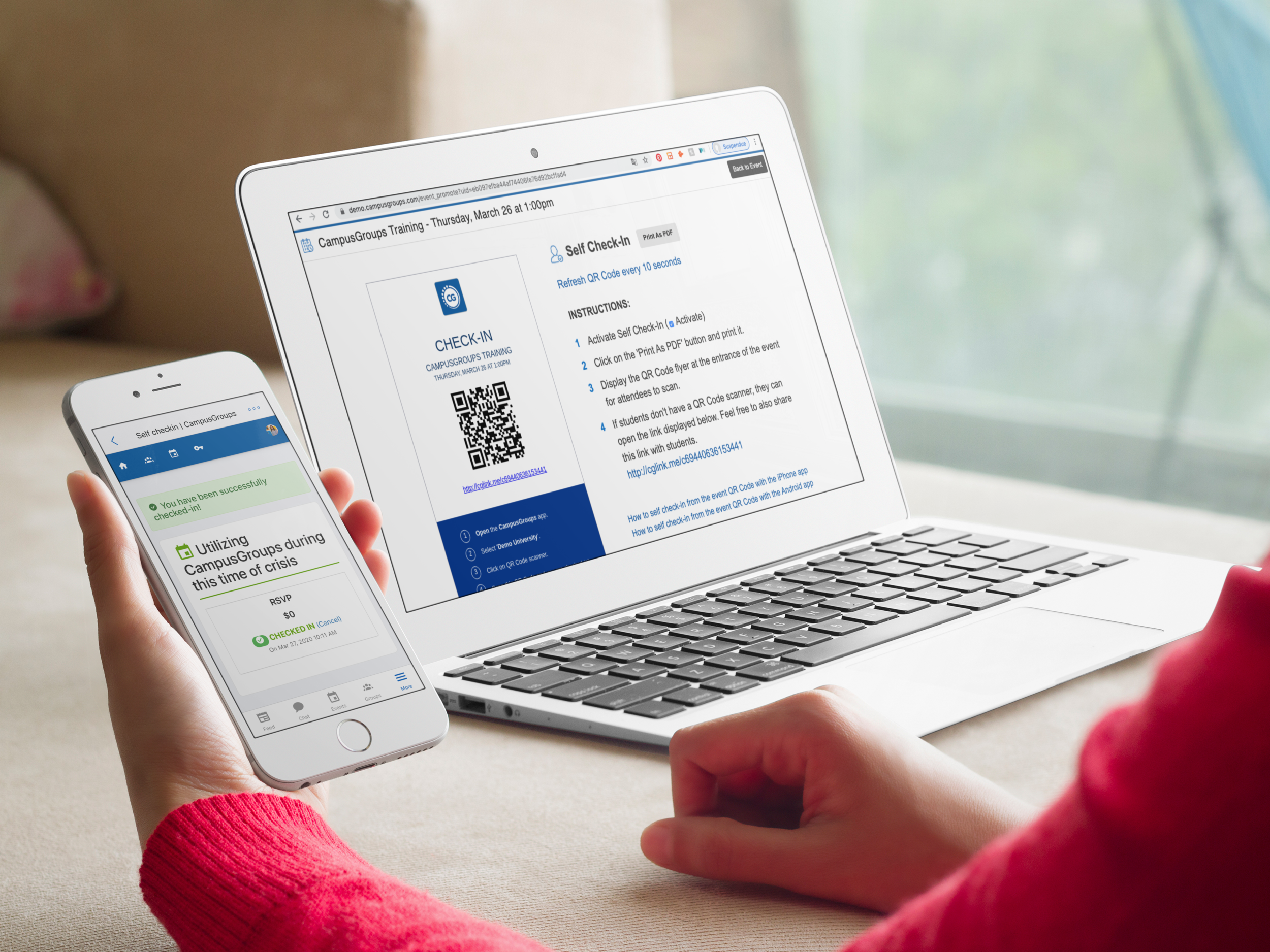Strategies to Make Your Hybrid Events a Success!
/2020 saw the rise of virtual events across higher-education institutions. The Covid-19 pandemic pushed the needle for events, forcing colleges to rethink how meetings are managed and held.
Events that were mostly face-to-face pre-pandemic became almost exclusively virtual. To maximize the reach of virtual events and keep audiences engaged, those hosting the events had to get creative.
Event management systems also had to up the ante. More than a year on, virtual events are not only an alternative to in-person events but a great supplement, broadening their attendance and reach.
Hybrid events have become the “new normal” for many campuses. While no longer a necessity, many colleges have seen them as an asset from both an event management and student engagement standpoint.
Hybrid Event Definition
A hybrid event is a meeting, large or small, combining a live in-person event with a virtual online component.
The virtual aspect of the conference generally involves an online representation of the live event. It enables attendees to engage in multiple ways on-demand, prior to, during, and after the event.
In the higher-education space, popular hybrid events include:
· Orientation.
· New student programs.
· Clubfests.
· Greek life recruitment.
· Academic resource fairs.
· Career fairs.
· Networking sessions.
· Seminars.
· Roundtables.
· Workshops.
· Study groups.
· Coffee chats.
What are the Benefits of Hybrid Events?
Among the benefits of hybrid events is that they broaden participation. They cater to people who can attend live in-person and those unable to attend in-person due to health reasons, cost, or competing commitments, enabling them to join a live stream event.
The virtual component helps expand the reach of the event across time zones. It also reduces travel and set up related costs, as well as the carbon footprint of the event. Including a virtual component to an onsite event may also be a great way to get around capacity limitations of a specific venue.
The online setting further enables in-person and virtual attendees to have a more interactive experience. In addition, the digitalization of the event from start to finish, makes the management of the event more efficient.
It also facilitates the collection and analysis of event related metrics. This helps organizers measure engagement and plan for future events based on lessons learned.
How to Engage your Audience during Hybrid Events?
The most successful hybrid events provide a great experience for the in-person attendees and the virtual attendees. The person joining from their home must be as engaged as the person attending the event live in-person.
Having a virtual component is also a great way to enhance the experience of the person on the ground. It provides attendees with a go-to place for all event-related material prior to the event.
This helps your audience prepare for the conference and make the most of it. It also gives attendees the choice to interact in the way they feel most comfortable, which for some may be virtually.
In addition to providing web-based access to attendees and participants, having the content of the event mobile optimized is critical. It enables people to join from where they want, how they want—and today most people prefer to consume bite-sized information on-demand via their mobile device.
It is also important for the content to be varied (including a mix of written documentation, photos, videos, links to social media) and engaging. This will contribute to increasing attendance and capturing people’s attention for longer.
Essential Features for a Successful Hybrid Event
Features that are key to maximizing the experience of event attendees and participants include:
1. A dedicated website and mobile app for the event, where attendees and participants can access the agenda, event material, and more on the go.
2. The ability for organizers to securely register attendees, track RSVPs or paid tickets.
3. A process for organizers to market the event, send email communications and push notifications.
4. A quick and safe way for participants to check-in to the conference and its sub-events.
5. A complete directory and interactive map of event participants.
6. Live video conferencing of main events such as keynote speeches or workshops.
7. Online presentations, including webcasts and breakout sessions.
8. Video conferencing and online chats for group and one-on one interactions.
9. Live feed of event photographs and other communications.
10. Live metrics that provide real time data, such as current footfall, which booths are most active, how many conversations are taking place simultaneously.
11. Gamification to introduce a fun and reward-based element, encouraging engagement.
12. Powerful attendance tracking and reporting features.
Choosing the Right Hybrid Event Management Platform
While there are several hybrid event management platforms out there, some software are more powerful than others. When exploring the market, it is particularly important to choose a software that:
· Has a user-friendly interface and workflow.
· Is fully responsive on mobile phone and/or available on a native mobile app.
· Integrates with other systems.
· Offers advanced capabilities.
The most successful systems contain a vast spectrum of different features, taking a hybrid event from start to finish. They were also created to foster and measure student involvement.
The most complete software have built out lots of auxiliary features. Strategic ones include:
· Room reservation management.
· Integrations with other systems, such as CMS or CRM platforms.
· Multiple registration and ticketing options.
· Custom tickets.
· Secure payment gateway.
· Waitlists.
· Mobile attendance tracking (via QR codes).
· Speaker bios and photos.
· Waivers.
· Automated reminders.
· Post-event surveys.
· Virtual spaces (to host one-on-one or group interactions over text or video chat).
Hybrid events provide the best of both worlds. Integrating a virtual component to an event has demonstrated that it enhances the experience of attendees and broadens the reach of the event. It has also proven to facilitate event management, tracking and reporting.
It is a way for higher-education institutions to stand out and maximize student engagement, which has been proven to positively affect student success and retention. They can also significantly lower the cost of large-scale events without having to curtail the breadth of the audience.
RELATED ARTICLES:




















